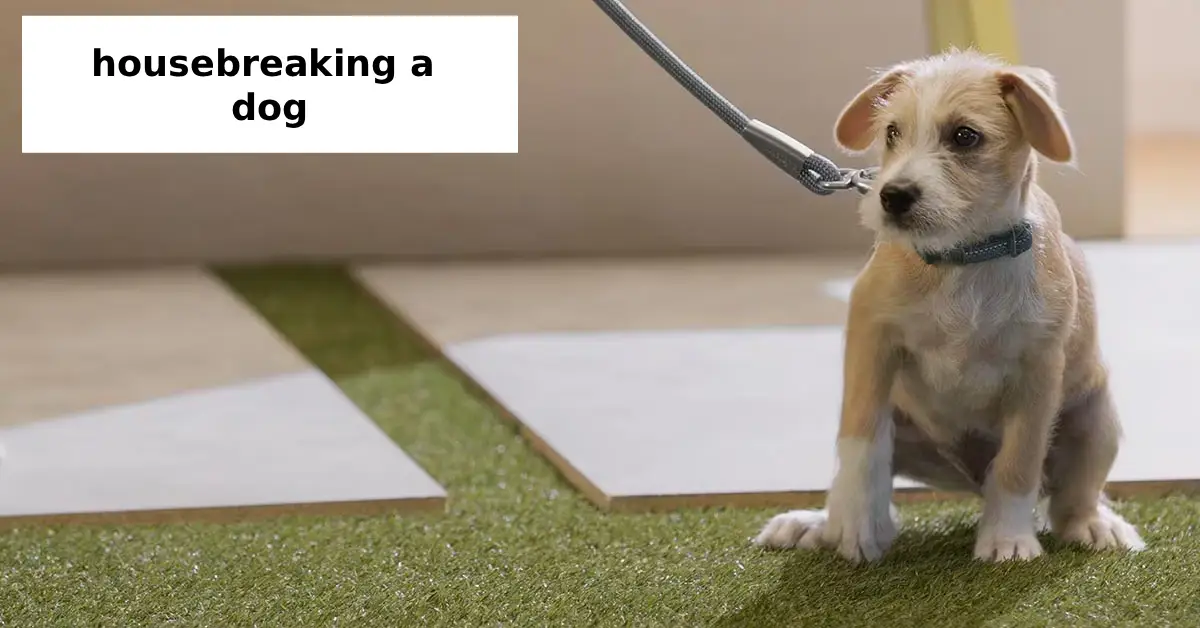Housebreaking a dog is one of the most important responsibilities for any new pet parent. Whether you are new dog owners in the United States or a family adopting puppies for the first time, teaching your furry friend where and when to relieve themselves creates a clean, stress-free home environment. While it requires patience and consistency, following a clear system makes the process much easier.
In this guide, we’ll walk you through step-by-step methods for housebreaking a dog, along with expert insights, helpful schedules, and common mistakes to avoid. By the end, you’ll feel confident about guiding your puppy—or even your older rescue dog—toward reliable potty habits.
Why Housebreaking a Dog is Important
A well-trained dog is not just about convenience—it’s about creating harmony in your home. Proper housebreaking a dog ensures:
- A hygienic and odor-free living space.
- Reduced stress for both owners and pets.
- Stronger bonding between you and your dog.
- A confident, well-adjusted dog that understands boundaries.
For dog parents struggling with potty training, getting the basics right early on saves months of frustration later.
Step 1: Understand Your Dog’s Natural Routine
Before starting with schedules or crates, observe your dog’s natural bathroom habits. Puppies usually need to relieve themselves:
- After meals.
- After naps.
- After playtime.
- First thing in the morning and right before bedtime.
This observation will help you create a puppy house training schedule tailored to your dog’s needs. Busy professionals looking for quick housebreaking methods can rely on this predictable routine to minimize accidents indoors.
Step 2: Choose a Training Location
Consistency is key in housebreaking a dog. Always take your pup to the same outdoor spot to encourage association. If you live in an apartment, balcony potty pads or artificial grass patches can be useful for apartment and city dog owners needing indoor/outdoor training solutions.
Teaching consistency is also one of the best dog training tips experts recommend.
Step 3: Crate Training for Housebreaking
Many trainers highlight crate training for housebreaking as one of the most effective approaches. Dogs naturally avoid soiling their sleeping area. A properly sized crate (big enough to stand, turn, and lie down comfortably) helps your puppy learn to control their bladder until you take them outside.
This is especially helpful for families adopting puppies for the first time because it adds structure and limits mess.
Step 4: Create a Puppy House Training Schedule
A consistent schedule forms the backbone of successful training. Here’s an example:
- Morning: Take the dog outside immediately after waking.
- After Meals: Within 10–15 minutes, head outdoors.
- Playtime: Offer a potty break right after.
- Bedtime: One last trip outside to avoid overnight accidents.
This puppy house training schedule works not just for puppies but also for housebreaking older dogs who may have picked up poor habits.
Step 5: Use Positive Reinforcement
Never underestimate the power of praise. Positive reinforcement dog training works wonders—reward your dog immediately after they go in the right spot with treats, verbal praise, or gentle affection.
Avoid scolding or punishment for accidents. Instead, calmly clean up and redirect your dog next time. This approach helps dogs learn faster and builds trust between you.
Step 6: Watch for Signals
Dogs often give subtle signs before they need to go out. Watch for behaviors like:
- Sniffing around.
- Circling.
- Whining or scratching at the door.
Recognizing these signals is an easy puppy training method that prevents accidents before they happen.
Step 7: Avoid Common Mistakes
Even well-meaning owners make errors during housebreaking a dog. Here are the biggest dog potty training mistakes to avoid:
- Leaving food and water available at all times, making timing unpredictable.
- Using punishment, which can cause fear-based behavior.
- Inconsistent schedules, leading to confusion.
- Skipping crate training or misusing crates as punishment.
Avoiding these mistakes can shorten training time significantly.
Step 8: Puppy Potty Training Hacks
Looking for shortcuts? These puppy potty training hacks can make life easier:
- Keep cleaning supplies handy for quick accident cleanups.
- Use a leash during potty breaks to prevent distractions.
- Set alarms as reminders for consistent potty trips.
- Gradually increase the time between breaks as your puppy matures.
Step 9: Special Considerations for Older Dogs
Many assume only puppies need training, but housebreaking older dogs is also possible. Older dogs may have ingrained habits, but with patience, crate training, and structured schedules, they too can adapt. This is especially relevant for those adopting from dog rescue organizations, where dogs often need retraining after living in shelters.
Step 10: Be Patient and Stay Consistent
Above all, patience is the secret to success in housebreaking a dog. Some dogs catch on within a week, while others may take months. Every dog is unique, and setbacks are normal. With persistence, consistency, and positivity, your dog will succeed.
Quick Recap: Step-by-Step Guide
- Understand your dog’s natural routine.
- Choose a consistent potty spot.
- Use crate training effectively.
- Follow a puppy house training schedule.
- Apply positive reinforcement dog training.
- Watch for signals.
- Avoid common mistakes.
- Use handy potty training hacks.
- Adjust techniques for older dogs.
- Stay consistent and patient.
FAQs About Housebreaking a Dog
How long does it take to housebreak a dog?
Most puppies learn within 4–6 months, but some may take up to a year depending on breed, age, and consistency.
Can you housebreak a dog without a crate?
Yes, but crate training for housebreaking speeds up the process by encouraging natural bladder control.
What should I do if my dog keeps having accidents?
Review your schedule, increase potty breaks, and reward success. If issues persist, consult a professional trainer or vet.
Final Thoughts
Housebreaking a dog may seem overwhelming at first, but with structure, patience, and the right techniques, it becomes a rewarding journey. Whether you’re guiding a playful puppy or working with a rescue, remember: every success brings you closer to a happy, well-adjusted dog.
By following this step-by-step system and avoiding common pitfalls, you’ll not only save your carpets—you’ll also strengthen the lifelong bond between you and your furry family member.






1 thought on “Step-by-Step Guide to Housebreaking a Dog”